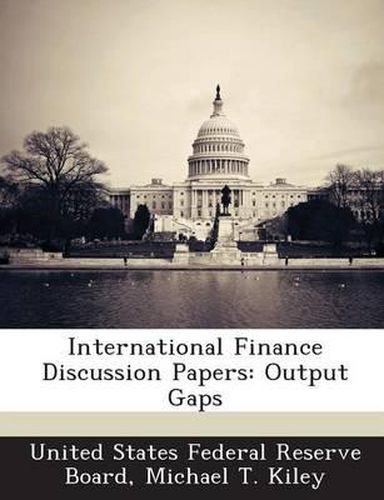Readings Newsletter
Become a Readings Member to make your shopping experience even easier.
Sign in or sign up for free!
You’re not far away from qualifying for FREE standard shipping within Australia
You’ve qualified for FREE standard shipping within Australia
The cart is loading…






What is the output gap? There are many definitions in the economics literature, all of which have a long history. I discuss three alternatives: the deviation of output from its long-run stochastic trend (i.e., the “Beveridge-Nelson cycle”); the deviation of output from the level consistent with current technologies and normal utilization of capital and labor input (i.e., the “production-function approach”); and the deviation of output from “flexible-price” output (i.e., its “natural rate”). Estimates of each concept are presented from a dynamic-stochastic-general-equilibrium (DSGE) model of the U.S. economy used at the Federal Reserve Board. Four points are emphasized: The DSGE model’s estimate of the Beveridge-Nelson gap is very similar to gaps from policy institutions, but the DSGE model’s estimate of potential growth has a higher variance and substantially different covariance with GDP growth; the natural rate concept depends strongly on model assumptions and is not designed to guide nominal interest rate movements in “Taylor” rules in the same way as the other measures; the natural rate and production function trends converge to the Beveridge-Nelson trend; and the DSGE model’s estimate of the Beveridge-Nelson gap is as closely related to unemployment fluctuations as those from policy institutions and has more predictive ability for inflation.
$9.00 standard shipping within Australia
FREE standard shipping within Australia for orders over $100.00
Express & International shipping calculated at checkout
What is the output gap? There are many definitions in the economics literature, all of which have a long history. I discuss three alternatives: the deviation of output from its long-run stochastic trend (i.e., the “Beveridge-Nelson cycle”); the deviation of output from the level consistent with current technologies and normal utilization of capital and labor input (i.e., the “production-function approach”); and the deviation of output from “flexible-price” output (i.e., its “natural rate”). Estimates of each concept are presented from a dynamic-stochastic-general-equilibrium (DSGE) model of the U.S. economy used at the Federal Reserve Board. Four points are emphasized: The DSGE model’s estimate of the Beveridge-Nelson gap is very similar to gaps from policy institutions, but the DSGE model’s estimate of potential growth has a higher variance and substantially different covariance with GDP growth; the natural rate concept depends strongly on model assumptions and is not designed to guide nominal interest rate movements in “Taylor” rules in the same way as the other measures; the natural rate and production function trends converge to the Beveridge-Nelson trend; and the DSGE model’s estimate of the Beveridge-Nelson gap is as closely related to unemployment fluctuations as those from policy institutions and has more predictive ability for inflation.